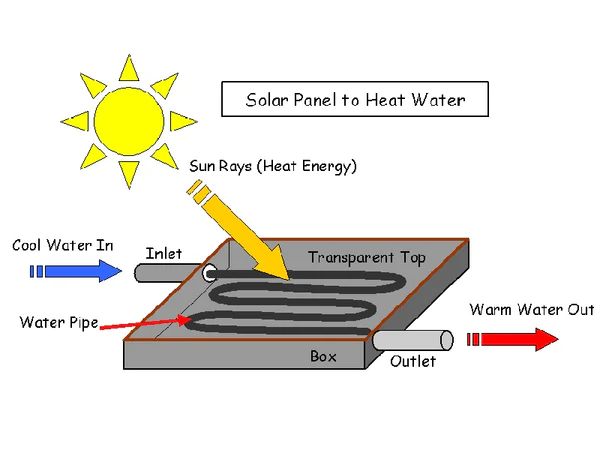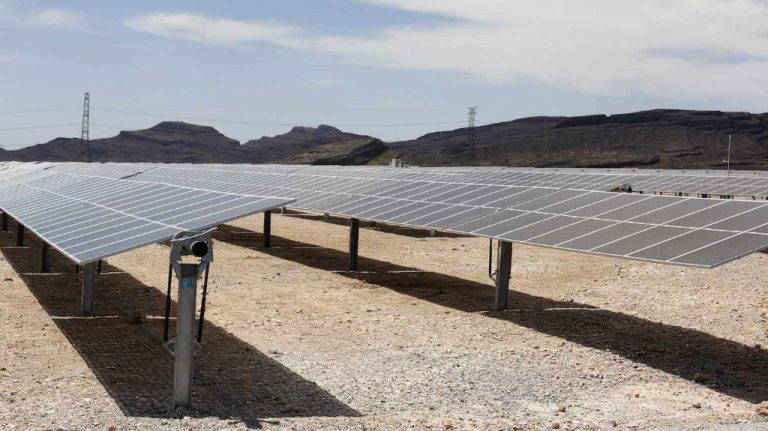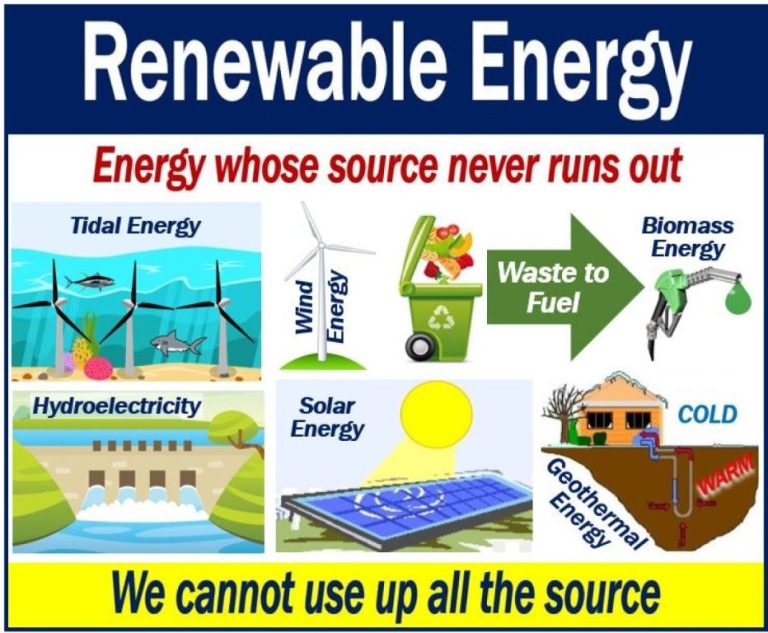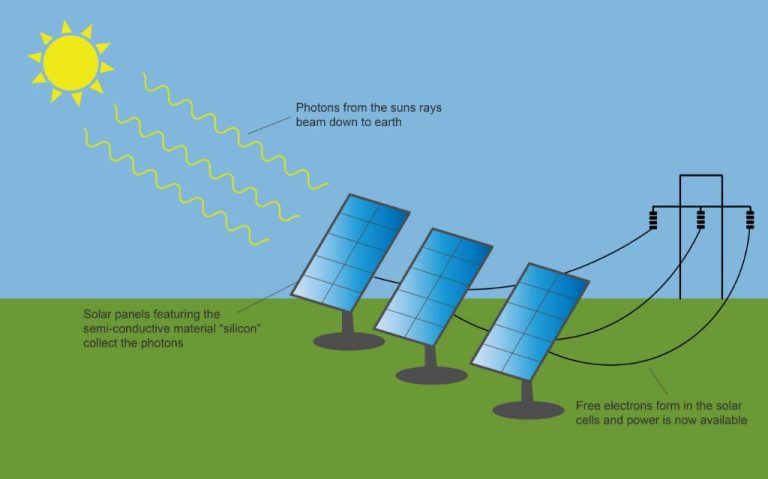Can You Convert Solar Energy Into Heat?

Solar energy refers to the radiant light and heat from the sun that can be harnessed and converted into usable forms of energy (Solar energy | Definition, Uses, Advantages, & Facts). The sun produces an enormous amount of radiant energy and is considered a renewable and clean energy source. Converting solar energy into usable heat has become increasingly important as we look for sustainable ways to meet our energy needs.
There are a couple key reasons why converting solar energy into heat is so valuable. First, heating applications, like water heating, space heating, and heating swimming pools account for a large portion of energy demand. Solar thermal technology provides a clean way to meet these needs (About Solar Energy | SEIA). Second, solar heat can often provide energy at the point of use, reducing reliance on external power grids and energy transportation. Overall, converting solar energy into usable heat provides environmental and efficiency benefits that are becoming more and more important.
How Solar Energy Works
Solar energy originates from the sun in the form of electromagnetic radiation. The sun produces energy through nuclear fusion reactions in its core, converting hydrogen into helium and releasing enormous amounts of energy in the process. This energy travels to the sun’s surface in the form of photons, which are packets of light energy.
These photons stream outward in all directions at the speed of light, spreading heat and light across the solar system. A tiny fraction of these photons reach Earth and interact with the atmosphere and surface. Solar energy technologies harness these photons in two main ways:
First, through the photovoltaic effect, which converts photons directly into electricity within solar cells. Photons with enough energy hit electrons in the solar cell’s semiconducting material, knocking them loose and allowing them to flow freely as electricity.
Second, through thermal absorption, where materials like metal or water absorb solar photons and convert them into heat energy. This thermal energy can then be used directly or converted into electricity through generators.
In both methods, solar photons provide the source energy that powers solar technology. Understanding the photon’s electromagnetic radiation and how it interfaces with technology materials is key to utilizing solar energy effectively.
Solar Thermal Technology
Solar thermal technology harnesses the heat from the sun to generate thermal energy. There are two main types of solar thermal technologies: solar water heaters and solar air heaters. Solar thermal systems can also be used for large-scale concentrated solar power plants.
Solar water heaters, also known as solar domestic hot water systems, use solar energy to heat water. They consist of solar thermal collectors and a storage tank. The collectors, which can be flat plates or tubes, absorb heat from sunlight. This heat is transferred to water which flows through the collectors. The hot water is then stored in the tank ready for use (https://energypedia.info/wiki/Solar_Thermal_Technologies).
Solar air heaters, also called solar air conditioning systems, work similarly but use air instead of water as the heat-transfer medium. The solar thermal collectors heat up air which is then moved by fans to transfer the heat directly or to a thermal storage system. The hot air can be used to heat indoor spaces or to generate hot water (https://www.eia.gov/energyexplained/solar/solar-thermal-power-plants.php).
Concentrated solar power (CSP) plants use mirrors to concentrate sunlight to heat a receiver containing a heat-transfer fluid. The most common types of CSP technologies are parabolic trough systems, solar power towers, linear Fresnel reflectors and dish/engines. The heat is used to generate steam to drive a turbine and produce electricity (https://www.eia.gov/energyexplained/solar/solar-thermal-power-plants.php).
Photovoltaic Technology
Photovoltaic (PV) technology converts sunlight directly into electricity using semiconducting materials like silicon that exhibit the photovoltaic effect. PV cells are commonly known as solar cells. Individual PV cells are connected together to form larger units called modules or panels.
PV panels produce electricity whenever sunlight hits them, with greater power output on sunny days and clear skies. The electricity generated can be used to power homes, buildings, and the grid. PV systems do not produce greenhouse gas emissions during operation.1
Compared to solar thermal systems, PV panels have higher efficiency in converting sunlight into energy. PV systems take up less space than solar thermal installations for an equivalent power output. However, PV electricity requires storage systems like batteries to provide power when the sun is not shining. Thermal energy from solar thermal systems can be more easily stored for later use.
Overall, PV technology is highly versatile and scalable, from powering small gadgets to grid-connected systems for neighborhoods and cities. It produces clean renewable electricity from an abundant free fuel source – sunlight.
Storing Solar Heat
There are several ways to store the heat generated from solar thermal technologies so it can be used when needed, not just when the sun is shining. Three main methods of thermal energy storage for solar power are thermal mass, molten salt storage, and phase change materials.
Thermal mass involves materials that can absorb and store heat, such as water, concrete, or earth. The thermal mass gradually releases heat over time. This is one of the simplest forms of solar heat storage often used for solar water heating systems in homes.
Molten salt storage involves heating up a molten salt mixture which retains heat efficiently. The hot molten salt can then be stored and used to generate steam to drive a turbine and create electricity on demand. Molten salt storage allows concentrated solar thermal plants to continue generating electricity long after sunset.
Phase change materials utilize substances like wax or salts that melt and solidify at certain temperatures. They can absorb heat as they melt to store energy, then release heat as they solidify. These materials allow concentrated solar plants to store many hours worth of thermal energy compactly.
Together these thermal storage methods allow solar heat to be stockpiled for on-demand use 24/7, not just when the sun is providing energy.
Applications of Solar Heat
Solar thermal energy has a wide array of applications, especially for residential water and space heating, as well as industrial process heat. Some of the most common ways that solar heat is utilized include:
Water Heating
Solar water heaters are one of the most popular uses of solar thermal technology. By placing solar collectors on the roof, sunlight can be used to heat water in the tank for residential use. This provides an economical and sustainable way to heat water for bathing, washing, and other household needs without relying solely on electricity or gas.[1]
Space Heating
Solar thermal collectors can also provide supplemental space heating by circulating heated liquid through radiators or in-floor systems. This direct heating from the sun’s rays offsets other heating fuels during the daytime and sunny seasons.[2]
Industrial Process Heat
Solar process heating is used in manufacturing, food processing, chemical refining and other industries to provide heat for equipment, boilers, and processes up to several hundred degrees. Concentrated solar thermal systems can produce higher temperature process heat on a large scale.[1]
Cooking
Solar cookers harness sunlight to cook, bake, and pasteurize food and water. These devices concentrate sunlight to generate enough heat for cooking without other fuel sources, providing an affordable cooking solution.[2]
Solar Heat Around the World
Solar thermal power plants are in operation around the world, with concentrated solar power installations located in the United States, Spain, North Africa, the Middle East, India, China, and Australia (Solarpaces). Some notable projects include:
The Crescent Dunes Solar Energy Project in Nevada, which can supply power for up to 75,000 homes using its 110 MW capacity (SolarPACES). This project demonstrates the capability for solar power with storage to provide reliable and consistent energy.
Spain’s 50 MW Andasol Solar Power Station, which can supply environmentally-friendly solar power for up to 200,000 people (SolarPACES). With Spain being a leader in CSP technology, the country has helped drive growth.
The Noor Ouarzazate Complex in Morocco, set to be the world’s largest multi-technology solar installation at 580 MW capacity once fully completed (SolarPACES). It demonstrates the potential of solar in North Africa.
India’s first commercial CSP project, the 125 MW Gujarat Solar One (Wikipedia). As a growing energy consumer, India’s investments in solar heat can help meet demand sustainably.
With solar resources abundant worldwide, particularly in the sunbelt regions, many countries have tremendous potential to harness solar heat. Continued technology improvements and cost declines will enable broader adoption going forward.
Costs and Benefits
The upfront costs of solar thermal systems have decreased over time as the technology has improved and manufacturing has scaled up. According to the U.S. Department of Energy, current cost estimates for household-sized solar water heating systems are around $100 per square foot of collector area (source). Despite the high upfront costs, solar thermal systems can save money in the long run by reducing electricity and fossil fuel consumption.
Vaillant estimates that solar thermal systems can reduce energy consumption for water heating by up to 60% and for space heating by up to 35% (source). By offsetting electricity and fossil fuel usage, solar thermal systems provide both economic and environmental benefits. Environmentally, solar thermal reduces greenhouse gas emissions and local air pollution by replacing fossil fuel combustion. As solar technology continues to advance and costs decline further, solar thermal systems will become even more cost competitive.
Future Outlook
The future growth potential for solar thermal technologies looks promising. According to the International Energy Agency (IEA), solar thermal energy has the potential to provide up to 16% of global electricity by 2050 (Source). The IEA projects that solar thermal systems for water heating will reach around 400 million dwellings worldwide by 2030, up from 250 million in 2020 (Source).
Researchers at MIT estimate that by 2050, solar thermal plants with heat storage could provide more than 25% of US electricity generation (Source). This growth will be driven by falling costs, improved energy storage capabilities, and supportive government policies. Key areas of innovation include developing high-temperature collectors, low-cost thermal energy storage systems, and advanced power block cycles.
With continued technological improvements and cost reductions, solar thermal energy is poised to play a major role in the global transition to sustainable energy. Converting sunlight into usable heat has enormous potential to provide clean, renewable energy for heating, electricity, industrial processes, and more.
Conclusion
As we have seen, solar energy can certainly be converted into useful heat through solar thermal technologies like solar water heating systems, solar air heating systems, and concentrating solar power plants. These technologies harness the sun’s thermal energy and convert it into low, medium, and high-temperature heat that can be used for water heating, space heating, and even electricity generation.
Solar thermal applications have become quite popular and widespread worldwide over the past decades. Although solar energy accounts for only a small fraction of global energy production currently, solar thermal systems offer a promising renewable and clean energy solution for the future. With decreasing costs and advancements in thermal energy storage, solar thermal continues to expand and has significant potential to displace fossil fuel use for heat and power generation.
In summary, converting solar radiation into usable thermal energy is very much possible today. Solar thermal technologies already provide a sustainable way to meet hot water and heating needs, and ongoing innovations will allow solar’s share of heat and electricity production to grow.






